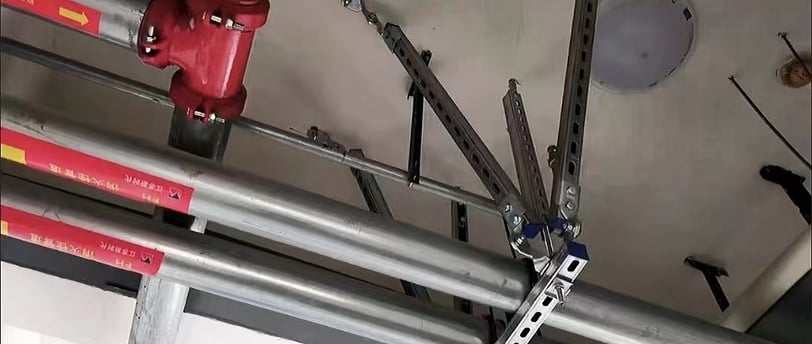Seismic Support for Building Seismic Reinforcement
Learn how seismic support systems can reduce displacement and protect building structures, equipment, pipelines, and circuits during earthquakes. Explore seismic reinforcement solutions for buildings.
7/30/20241 min read


Understanding Seismic Support Systems
Seismic support is a critical structural component designed to enhance the resilience of buildings during seismic events. The primary objective of seismic support systems is to mitigate the displacement and deformation of the building structure, thereby safeguarding internal equipment, pipelines, and circuits from potential damage caused by earthquakes.
How Seismic Support Works
Seismic support systems employ various techniques and materials to provide additional strength and stability to building structures. These systems often include braces, dampers, isolators, and other mechanical devices that can absorb and dissipate seismic energy. By doing so, seismic support systems help to maintain the integrity of the building's framework, reducing the risk of catastrophic failure during an earthquake.
Types of Seismic Support
There are several types of seismic support systems, each tailored to meet specific structural needs. Bracing systems, for instance, provide lateral support to prevent swaying and buckling. Base isolators are designed to decouple the building from ground motion, allowing the structure to move independently from the shaking ground. Additionally, energy dissipating devices such as dampers absorb and reduce the energy transferred to the building, minimizing the impact on the overall structure.
Benefits of Seismic Support
The benefits of implementing seismic support systems in buildings are manifold. Most importantly, these systems significantly enhance the safety and stability of the structure, protecting human lives during seismic events. Furthermore, they help to preserve the functionality of critical infrastructure, including internal equipment, pipelines, and circuits, which can be crucial for emergency response and recovery efforts. By reducing the extent of damage, seismic support systems also contribute to lower repair and maintenance costs in the aftermath of an earthquake.
Conclusion
In conclusion, seismic support is an indispensable component in modern building design, particularly in earthquake-prone regions. By reducing displacement and deformation, these systems play a vital role in protecting both the structural integrity of buildings and the safety of their occupants. As such, incorporating seismic support into building plans is not only a wise investment in safety but also a proactive measure to ensure the longevity and resilience of infrastructure.
Songyin Kunshen
上海松隐坤申贸易有限公司
Advancing support bracket management technologies for a sustainable future.
Contact
86 021 5738 0557
86 199 2112 0262
© 2024. All rights reserved.


